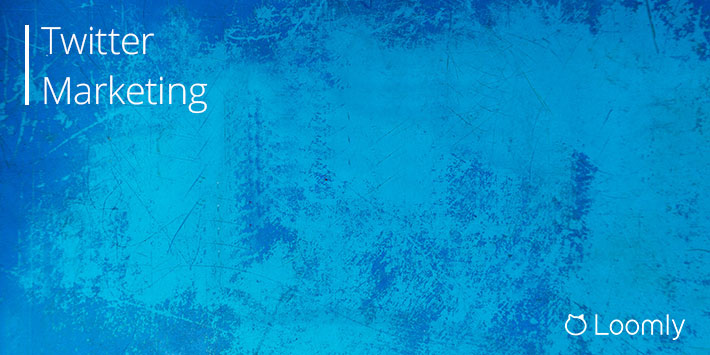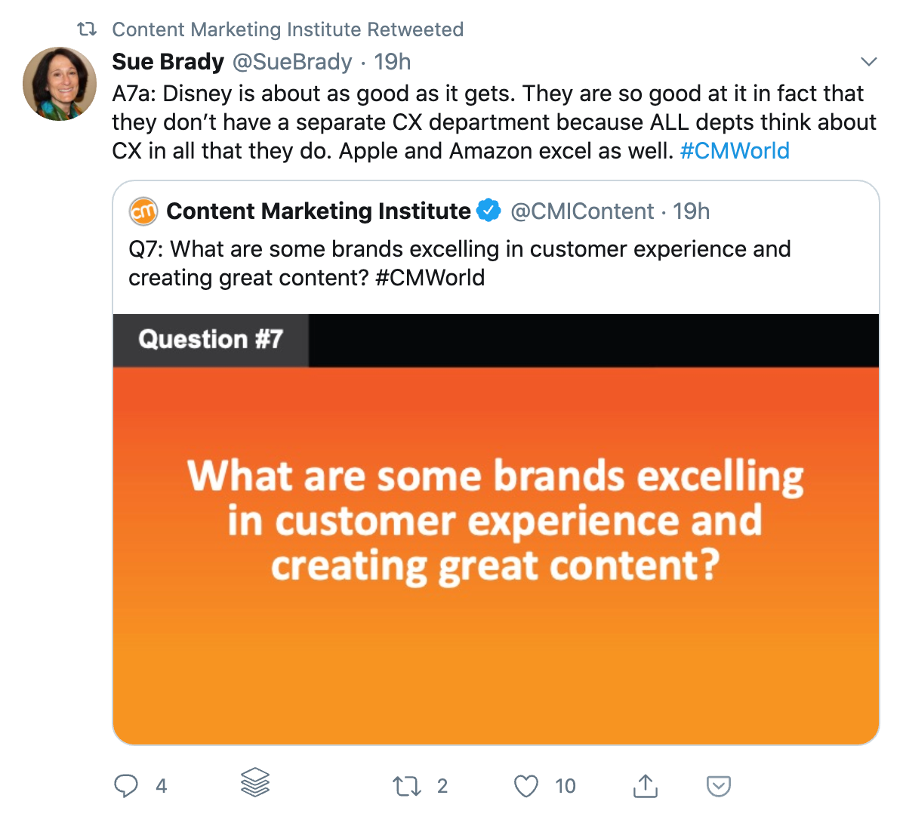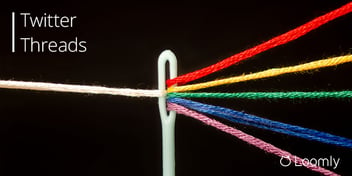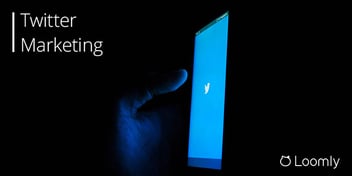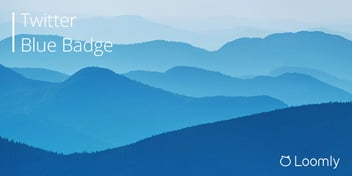Twitter Marketing: The Definitive Guide
Twitter is a popular social media platform with an incredibly loyal fan base, where you can increase the awareness of your brand.
Moreover, it is one of the best places to connect and interact with your audience one-on-one.
In this guide, you’ll discover why your brand should use Twitter, what makes Twitter unique, and how you can harness the power of Twitter marketing for your brand.
Let’s start!
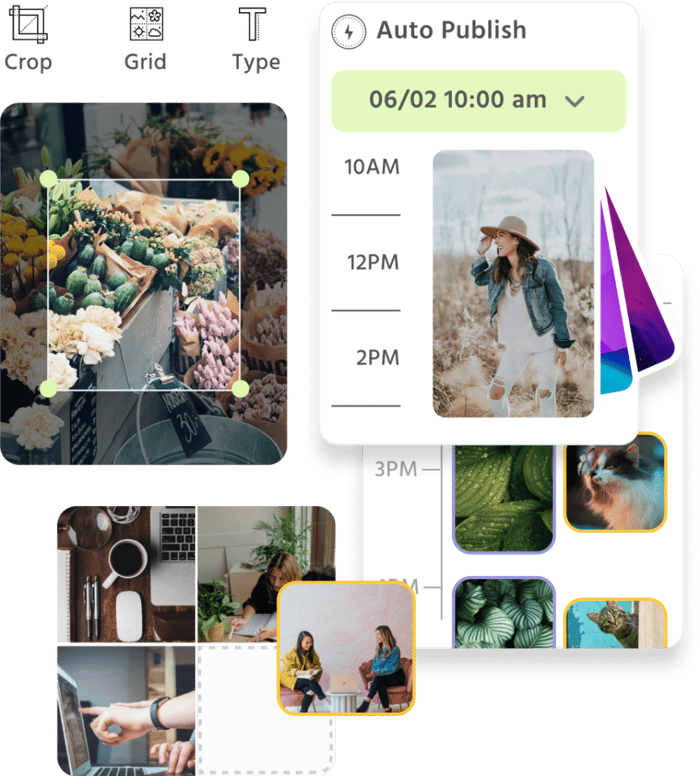
Manage all your social media accounts in one place.
Craft, schedule, & auto-post content to all your social channels, then track analytics and manage interactions from a single, easy-to-use dashboard.
Why Your Brand Should Care About Twitter
Twitter provides plenty of possibilities for your brand to communicate with your audience.
Although Twitter’s concise messaging remains one of its strong selling points, it’s no longer a short, text-only platform. Tweets can be made more engaging with the use of visuals, including videos, GIFs, and emojis.
Let’s take a close look at the underlying stats for the platform.
Twitter Usage Stats
- Over 600 million tweets are sent each day. That’s about 9,000 tweets every second.
- Twitter has 186 million monetizable daily active users (mDAUs):
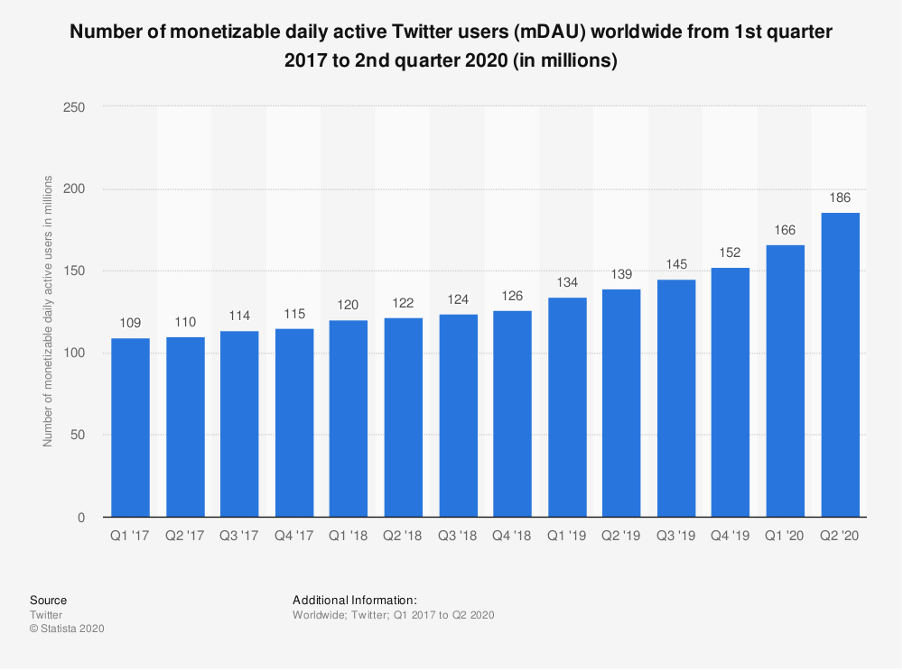
Note: mDAUs refers to those users who see ads. (Other social networks report all their DAUs, including those who don’t see ads.) Twitter used to report monthly active users, but that ceased in Q1 2019 on 330 million:
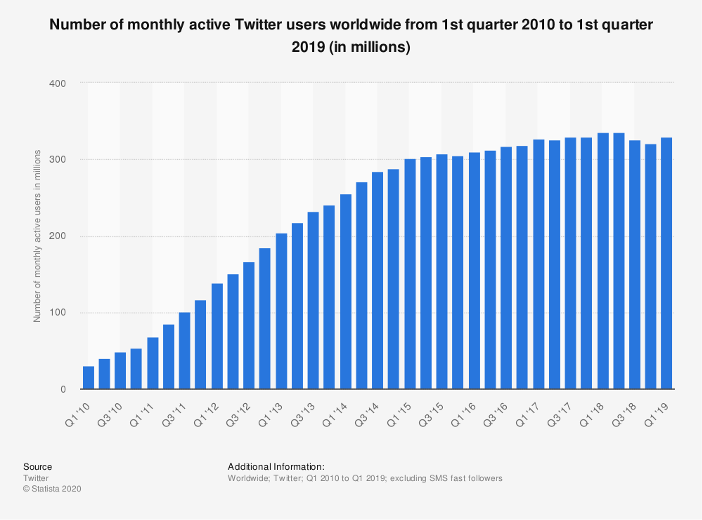
- 60% of Twitter users prefer brands that are inclusive and transparent.
- The most popular reasons for using Twitter in the US are:
- Checking the News = 56%
- Viewing photos = 42%
- Watching videos = 32%
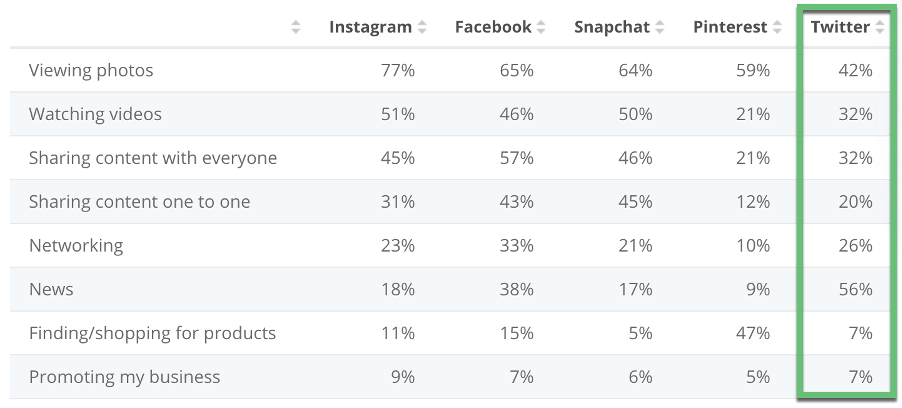
Twitter Demographics
Twitter is popular across different countries and age groups, with top brands attracting millions of followers.
Geography:
Twitter supports over 45 languages in total. The countries with the highest number of active Twitter users as of July 2020 are:
- US = 62.55 million
- Japan = 49.1 million
- India = 17 million
- Brazil = 15.7 million
- UK = 15.25 million
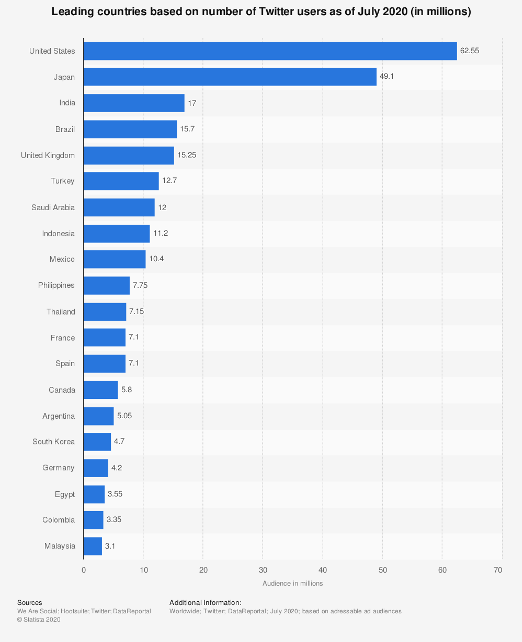
Age
Twitter is most popular with 18-49-year-olds. As of July 2020, almost 31% of Twitter users were in the 25-34 age group:
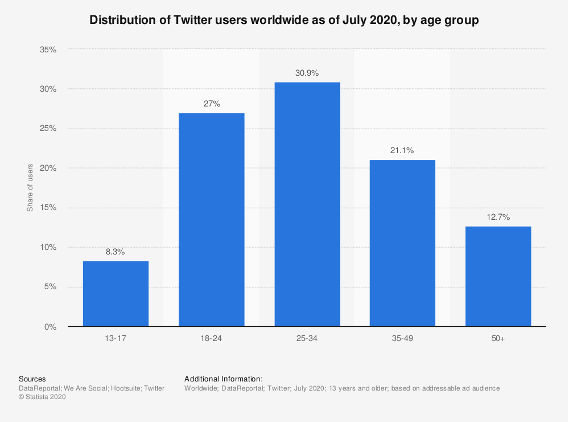
Gender
Twitter is more popular with men than women. As of July 2020, 65% of Twitter users were male and 35% were female.
Most Popular:
The top three Twitter accounts with the most followers, as of May 2020, were:
- Barack Obama = 118.09 million
- Justin Bieber = 111.78 million
- Katy Perry = 108.5 million
Aside from politicians and pop stars, the top five most-followed brands of 2019 were:
- PlayStation = 17.5 million
- Xbox = 13.7 million
- Chanel = 13.2 million
- Samsung Mobile = 12.1 million
- Starbucks = 11.3 million

What Makes Twitter Unique?
Twitter has been around since 2006 and may not appear as “trendy” as the latest social networks, like Instagram. However, it does have its quirks and can be used as a valid tool in your marketing strategy.
Instantaneity (news & trends)
One of Twitter’s standout features is its faced-paced news feed – users can quickly and easily share updates and communicate with the people they follow and who follow them.
It’s often the first place to find the latest news, as both journalists and ordinary people share breaking headlines. For example, here’s football reporter John Percy from the Daily Telegraph sharing some breaking news:
Jack Grealish has today been called up to the @England squad for the first time. Confirmation from the FA expected later this afternoon. Fully deserved IMO #avfc
— John Percy (@JPercyTelegraph) August 31, 2020
Marketers use Twitter’s speedy platform to share and promote branded content in seconds. For example, here’s Samsung Mobile unveiling their GalaxyZFold2 foldable mobile:
Farewell, flat.
As one era ends, the next one unfolds.
Change the shape of the future. #GalaxyZFold2Learn More: https://t.co/shg5EhQbad pic.twitter.com/IxdMc7k2fs
— Samsung Mobile (@SamsungMobile) September 1, 2020
Search engine capabilities
Twitter is not only a powerful social network but also a search engine tool. You can search your competitors to see what content and tactics they’re using. And similarly, prospects can search and learn about your brand, too.
Thought leadership and influence
Twitter is used by a variety of people and brands, including politicians, pop stars, and other celebrities. These people carry a lot of influence and use the platform to deliver messages to thousands of followers.
Likewise, marketing teams can tap into relevant influencers to help promote their brand. For instance, here’s actress and House ambassador Alma Jodorowsky promoting Chanel’s Cruise collection:
Actress and House ambassador Alma Jodorowsky arrived at the 2020 Angoulême Francophone Film Festival for the premiere of ‘The Enemy’ in a CHANEL jacket from the Cruise 2019/20 collection paired with a white top.#CHANELinCinema #CHANEL #CHANELCruise #CHANELMakeup pic.twitter.com/Zf8fTRSt6j
— CHANEL (@CHANEL) August 31, 2020
Some of the most potent thought leadership can come from within your company. Employees (at all levels) can share their subject matter expertise on their individual accounts, which you can then curate and amplify on your brand’s Twitter feed to a broader audience.
Customer service and support opportunities
Because of its instantaneity, Twitter is used by brands to handle customer service queries. Customers want a rapid response, and adequately staffed teams can handle those queries and provide quick customer service and support.
For instance, Verizon Support’s Pinned Tweet encourages customers to connect via social as they’re available 24/7:
If you need technical support, connect with us via social. Our team is available 24/7. #FiosFam #Verizon24X7 pic.twitter.com/ueyW5NbwoY
— Verizon Support (@VerizonSupport) August 25, 2020
Over 70% of Twitter users expect brands to interact with them on the platform. But be warned! Failing to respond to tweets can cause a 43% decrease in customer advocacy, while a swift reply can give you a 20% increase.
A study by Twitter and Publicis Media revealed that 120% of people are more likely to directly message a brand on Twitter compared to the other social media platforms:
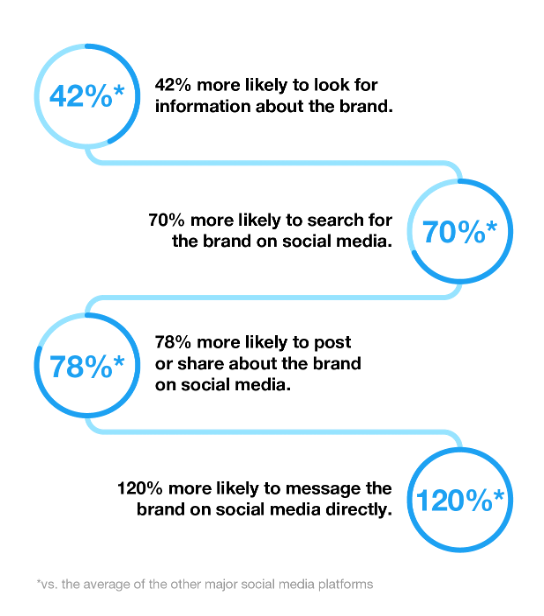
How to Harness the Power of Twitter in 2020
In this section, we’ll look at how you can harness the power of Twitter for your brand in five steps:
- Step 1 – Branding your profile
- Step 2 – Creating and optimizing your content
- Step 3 – Publishing your content
- Step 4 – Promoting your content
- Step 5 – Analyzing your results
Setting your Twitter goals and KPIs
But before you start tweeting, you’ll want to make sure you’ve set some Twitter goals and KPIs that align with your overall marketing and business goals.
For example, you might want to:
- Build an engaged following to increase brand awareness.
- Generate leads by directing traffic to a landing page.
- Increase traffic to your website by posting links to blog content.
- Build brand loyalty by providing excellent customer service.
- Network with influencers and industry thought leaders to help promote your brand.
You’ll circle back to these goals when you reach the final step and analyze your results.
Step 1 – Branding your profile
Your profile creates a first impression with users, so make it count. You should brand your Twitter profile the same as your other social media profiles so that users instantly recognize you.
Name and handle
Start with your brand name and handle. If possible, your handle (16 characters max.) should be the same as your brand name. But if that’s not possible, then you could add some relevant words.
For instance, at Loomly, we use the handle @LoomlySocial as that’s relevant to our brand:
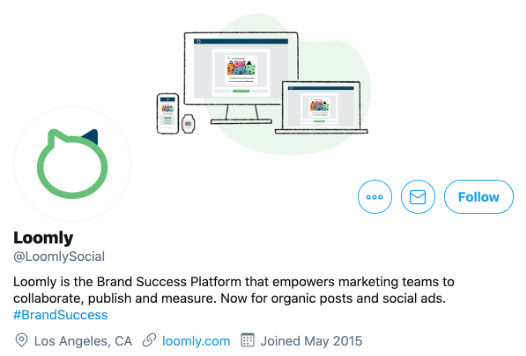
And the Content Marketing Institute use their familiar ‘short’ social media handle @CMIContent:

Visuals
Let’s stay with the CMI as we look at brand visuals.
- Colors: use your brand colors. For CMI, that’s orange.
- Photo/Logo: large brands typically use their logo as their profile image, while individuals tend to use their profile photo.
- Header image: there’s also the option to have a background header image. For example, the CMI (above) go with their orange branding color and tagline, but Rand Fishkin (below) opts for an airplane propeller:
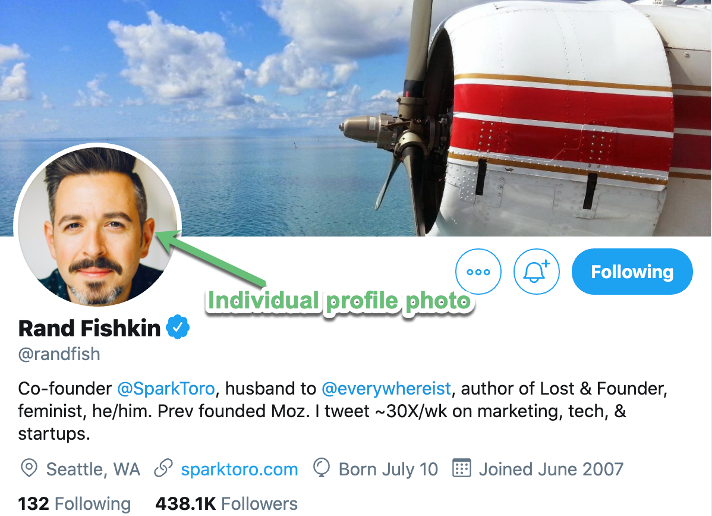
Pro Tip: Use the right-sized visuals:
- Profile picture or logo: 400x400px
- Header picture: 1080x360px
Bio description
Next up, you need to write your bio description (160 characters max). Use the space to tell people what you do. It’s the ideal place to use your brand proposition and showcase your brand’s personality.
You may also want to add relevant hashtags and tag other brands you’re associated with. For example, the CMI includes hashtags for their virtual conferences – #CMWorld and #ContentTECH – and Rand Fishkin tags his company @SparkToro.
Location
The location (30 characters max) lets you state your HQ. Or any other random place like the Moon. But ideally use it to set your primary location.
URL
Finally, you can insert your website’s URL (100 characters max).
You might want to consider building a URL with UTM parameters so you can track how many visits you get from your Twitter profile. But the downside is that you’ll need to use a URL shortener, and that may put people off clicking the link.
Step 2 – Creating and optimizing your content
Once your profile is finished, you can start planning your content. In this section, we’ll explore the options you have when creating your tweets.
Tone of voice
One overarching principle to consider is your tone of voice. How are you going to communicate with people? Will it be light-hearted, jolly, humorous, or serious? Refer to your brand messaging guidelines to make sure everyone is on point.
Text
You get 280 characters to craft your message on Twitter, which means you need to make it punchy as there’s no room for fluff. Also, remember if you include a link to drive traffic to your website, that takes up some of the characters, too.
Emojis
You can add some spice to your text message by using emojis. The most popular emoji on Twitter is the ‘Face with Tears of Joy’ emoji ????.
Mentions
When relevant, mention other accounts with the @ tag, but don’t overdo it. Mentioning loads of profiles looks a little spammy and usually decreases engagement on your tweet.
Hashtags
You can also include relevant hashtags, but again, don’t overdo it.
You can check Twitter’s Explore page for the current trending topics, including hashtags. Or, find popular hashtags for your niche in a tool like Hashtagify. For example, we’d use #MarketingPodcast when tweeting about our podcast:
???? Focusing on your competition… is a waste of time
There is no prize for being the best copycat… ????
Listen to the full episode tomorrow! Stay tuned…#TheBrandMoat #podcast #LoomlyPodcast #MarketingPodcast pic.twitter.com/nJUvITdBMs— Loomly (@LoomlySocial) September 1, 2020
You can also create hashtags to mention your products and campaigns. For example, Samsung Mobile uses #GalaxyZFold2 for the unboxing of their folding mobile phone:
You’ve had a sneak peek, now watch the full version of @BTS_twt unboxing the new #GalaxyZFold2 earlier at Unpacked! #GalaxyxBTS #SamsungEvent
Learn more: https://t.co/1u7Vlu8n0J#Unboxing #BTS #RM #Jin #SUGA #jhope #Jimin #V #JungKook pic.twitter.com/ZAliDNFiFg
— Samsung Mobile (@SamsungMobile) September 1, 2020
Images
Aside from the text elements, you can add visuals to your tweet, including pictures, charts, and graphs. Adding any visual helps your tweet stand out as users scroll their news feed. You can expect tweets with images to get up to three times more engagement than those without.
GIFs
While static images are good, GIFs work even better as users love animated images. You can post GIFs natively from the platform or add your own. According to Twitter, tweets with GIFs receive 55% more engagement than those without.
Videos
Videos are a great way to show users small product demos, unboxing items, and behind-the-scenes content. Consider adding captions to your videos for those situations when people can’t turn on the sound.
Tweets with video attract ten times more engagements than those without, plus they’re six times more likely to be retweeted than photos and three times more likely to be retweeted than GIFs.
There’s also the option to use the live video feature. These also get posted as tweets so people can still watch them after the live event.
Polls
One more type of interactive content to consider using is a Twitter poll. They’re an excellent way to interact with followers and can also be used to conduct market research and gather customer feedback.
You can ask a question and offer up to four answers for followers to choose from. Here’s an example:
Do you prefer LIVE videos..
or Pre-Recorded videos online??— DJ Kristopher Earl (@DJKristopherE) August 30, 2020
And here’s an example of a completed poll:
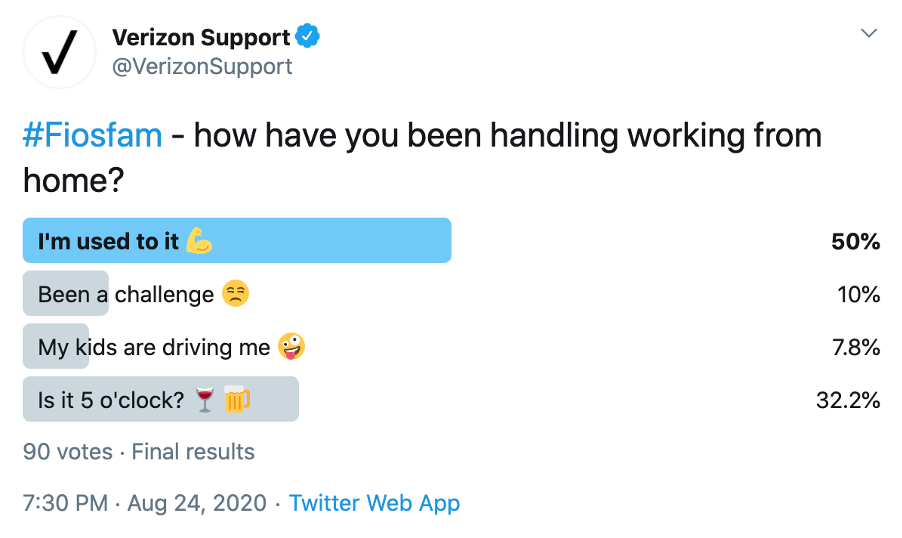
Step 3 – Publishing your content
Now you know how to create and optimize your content, it’s time to consider when and how often to tweet.
Let’s take a look.
When to tweet
When should you tweet? The short answer is: it depends.
There’s no magic formula for when to tweet because what works for one brand won’t work for another. Seriously, you’ll have to experiment with publishing content at different times and recording what works best.
How often to tweet
Next, you’ll want to consider how many times to tweet in a day. With so many tweets being posted, the lifespan of a typical tweet is roughly 20-30 minutes before it disappears into the archives.
To start, you could experiment with five tweets a day and see what level of engagement you get. It’s also worth checking to see how often your competitors tweet.
But the key is to be consistent. It’s no good posting 50 tweets one day and then disappearing for a week. Aim to publish a steady amount each day.
What’s the average number of posts per day?
According to Rival IQ, the median posting rate across all industries is 0.86 tweets per day:
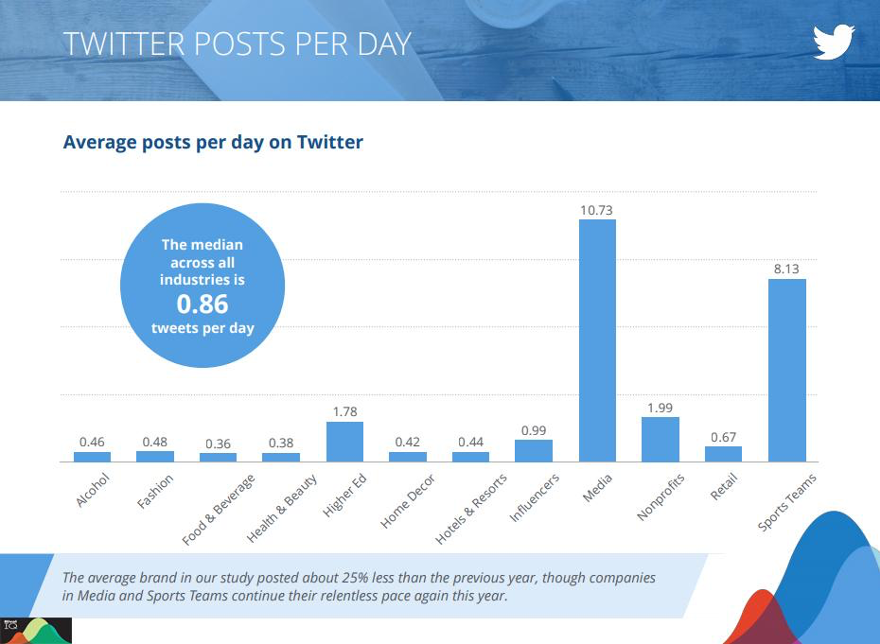
What to tweet
Some brands will have more content to share than others. But it’s worth remembering that your content shouldn’t be exclusively about you and your brand. You can curate content from trending and relevant topics in your industry to share with your followers.
Scheduling tweets
Putting all these elements together, it makes sense to plan your content with an editorial calendar, so you get the right mix and timing. And once you’ve found your optimal posting times, you’ll want to consider using a social media scheduler to make sure everything gets posted at the right time.
Step 4 – Promoting your content
After you’ve created, optimized, and published your content, you’ll want to think about building your audience and promoting your content.
Listen as well as talk
Twitter marketing involves listening and responding, as well as posting. If users comment on your post, engage them in conversation to develop the relationship further.
If you’re using Twitter for customer service and support, it’s especially important to listen and respond promptly to user queries.
You can also listen out for mentions of your brand and product names, employee names, and branded hashtags. These could be positive or negative mentions, so be prepared to handle each scenario.
Build a community
The more you use Twitter, you can start building a community of followers who regularly engage with your content.
You can follow people who are relevant to your business, like potential influencers, and start building relationships by commenting, liking, and retweeting their tweets.
Try Twitter Chats
One way of extending your reach and getting more followers is through Twitter Chats. If you’ve not come across them before, Twitter chats are online conversations around a central hashtag. For example, the Content Marketing Institute uses #CMWorld for their weekly Twitter chat. The typical format is for the host to ask questions and participants share their answers:
You could join a couple of Twitter chats so you can reach and engage new followers with your answers, or you could try hosting your own Twitter chat.
Reach out to influencers
We already touched on building relationships with potential influencers. If influencer marketing is a part of your brand strategy, then consider reaching out to influencers with an active, relevant audience who can help promote your brand.
According to Twitter, nearly 40% of Twitter users say they’ve made a purchase as a direct result of a Tweet from an influencer.
Send a DM
Twitter’s Direct Messages (DMs) are a useful way of keeping conversations private. For instance, you could reach out to an influencer via a DM. Or, if you’re handling support queries, you can ask customers to follow-up a tweet with a DM for sensitive account details:
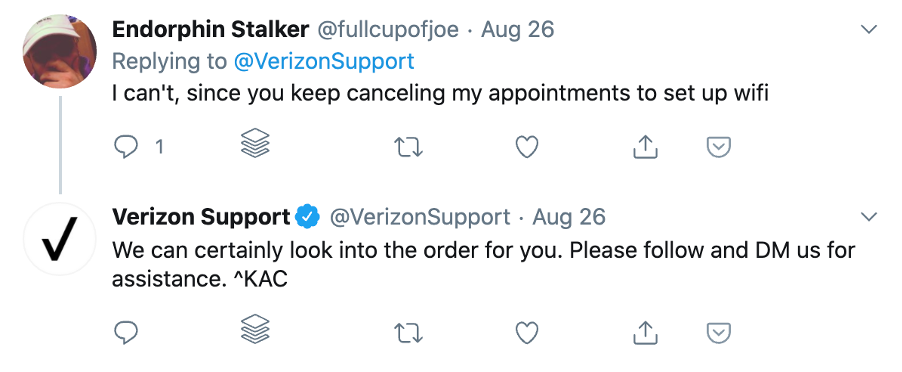
Run Twitter Ads
When you need to amplify your brand or boost engagement quickly, then you can use Twitter Ads.
Twitter Ads offers 20+ product options to showcase your content and media in the best format possible. The most popular formats are:
- Promoted Tweets – work best with engagements, reach, and followers campaigns.
- Twitter Cards – complement website clicks, app installs, and app re-engagement campaigns.
- Videos – the fastest-growing and most engaging media format.
Discover the #MateBookXPro 2020 – elegant design meets intelligent innovation. With a 3K touchscreen FullView Display that lets you see wider and brighter. Order today and claim a free #Matepad 10.4
— Huawei Mobile UK (@HuaweiMobileUK) August 10, 2020
According to Twitter’s Q3 2019 report, ad engagement is up 23%, so it’s worthwhile exploring this option.
Step 5 – Analyzing your results
The final step in harnessing the power of Twitter is to analyze your results. After you’ve created, optimized, shared, and promoted your content, you’ll want to see what impact your tweets have made.
Key metrics
You can access your account’s Twitter analytics to check on metrics, such as tweets, impressions, profile visits, mentions, and followers:

You can also monitor and report on your Twitter success from your Loomly’s Advanced Analytics dashboard:

As well as a monthly summary, you can drill down into post-level and account-level insights. Here are the key metrics you need to track on Twitter.
Post-level metrics:
- Impressions: How many times your tweet was seen on a screen.
- Engagements: How many people liked, clicked, shared, or took action on your Tweet.
- Engagement rate: The number of engagements related to the number of impressions.[Engagements/Impressions = Engagement Rate].
- Retweets: How many people shared your tweet with their audience.
- Likes: The number of people who positively reacted to your tweet.
- Replies: How many people responded to your tweet.
What’s a reasonable engagement rate?
According to Rival IQ, the median engagement rate across all industries is 0.048%, so don’t expect lots of clicks, likes, retweets, and comments on your tweets.
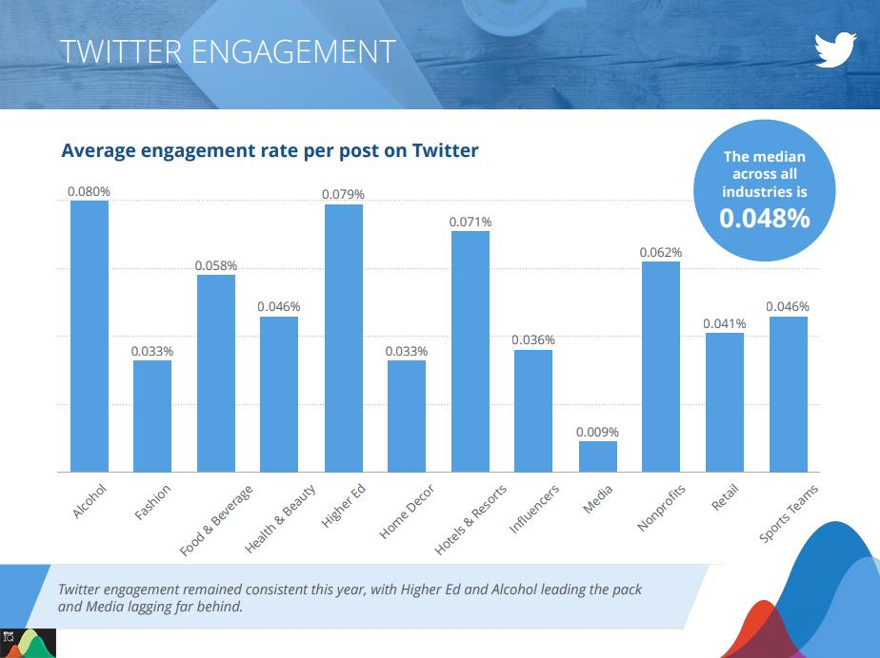
Account-level metrics:
- Followers: The number of people who follow your account.
- Profile visits: How many people clicked through to view your entire profile.
- Audience insights: The breakdown of your audience’s demographics and interests.
Link-level metrics:
- Link clicks: How many people clicked a link you shared.
Evaluate and adjust
Like all marketing plans, you’ll need to evaluate your Twitter strategy and ensure you’re hitting your goals and objectives. And if necessary, be prepared to make adjustments where needed.
Twitter Marketing in a Nutshell
Let’s wrap up this Twitter marketing guide with a quick recap of the key points:
- Make sure you keep your Twitter branding consistent with your other social media accounts.
- Optimize your content with images, GIFs, and videos to boost engagement.
- Publish content consistently to build your presence on the platform.
- Build an active community to help amplify and promote your content.
- Analyze your Twitter marketing performance to see where you can improve.
